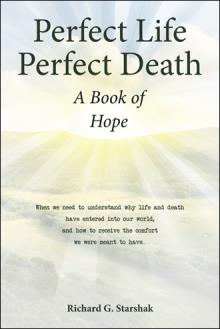II. How We See What We See
It is always at the beginning of any worthwhile project at hand, that it is by far the most difficult and most challenging. I may have accumulated an entire a room full of notes, scratchpads, jit-jots, and memos, but now is the time to unravel the pile. It is here that we begin to assemble the particular orders of our search. And within all that accumulation of matter, references, and thoughts, there must be an end goal. Do we not find the God we seek? Does the same God actually know me, understand me, and guide me? Does He find me amongst the billions of other “just like me’s” inhabitating this planet? And what does this process look like?
One of the joys of running a family garden center is the intermingling into the community around us. This is more than a pleasing and gratifying juncture into the lives of close-by folks offering landscape designs to whosoever may have such a need. However, although each design will be somewhat different in the details of the final drawing, they are all based on a specific set of principles, patterns, and functional guidelines of visual design. And yet, we always have a beginning point and an ending point.
The process starts, as many other processes start, with the broadest of questions and with a full gamut of possibilities. It is here that we contemplate and visualize on how to put this plan together. It is here that we peer ahead to the final look. A great question we regularly ask of our designee is “What do you want this to look like when we’re all done?” And so,
The beginning point envisions the ending point.
As we begin to build a landscape design, we will choose how to anchor the area visually (focal point) and then how to add things around it, as to the left and right (framers) in order to point our eyes to where we want them to go. We tell the viewer where to look. From here, we build some unity with more structural pieces. We repeat some plantings to add harmony, but not too many, as we also wish to add some variety for some increased interest throughout the garden or landscape. All of this is contained within a specific area upheld by a border that says “Here I am! Here I am!” This invites the viewer to “come and see.”
Although there are other considerations at-hand, as the size, numbers, positions, color, texture, and such, of what we decide to insert into the design, the most challenging, most time consuming, and most contemplating moments in the entire process is at the beginning. For it is here that we have the most options. How do we start? Where do we start? There may be a dozen different looks we can attain. Or for more intricate or personal garden areas, what themes can we incorporate? This is the point where we are trying to see now what we want to see later. And how will we get there?
Rarely is there a person who comes in that will tell me that they know exactly what they want. Most have a general idea. “We are leaning toward this look.” Or maybe, “We would like to see color all year.” Or the universal request of all home landscapers everywhere, “We want low maintenance.” Although low maintenance is not a visual presentation, theme, or design pattern, it percolates to the top of most desired requests.
The first thing we try to establish is a clearer vision of what we want to arrange. This is seeing the final piece. This is picturing it complete. This is taking our big picture and broad beginnings to see the end. What might the end look like? What insights guide the process? For we do know that,
The clearer the vision, the easier the course.
For a distinct and intelligible visionary foresight will always make the search for a good design much easier. It will get us to the point of finding the right materials, plants, trees, and shrubs to make the end exactly as it should be. It is what makes total sense, is logical, and fits the neighborhood as it brings peace, contentment, and pleasure to all who choose to look.
And who are those who enjoy the design process the most? It is those who have come expecting an outcome. It is those who have a direction they want to go and the motivation to invest the time needed to get there. They want to see what they were expecting to see, even though they were not sure exactly what they might see, or the exact path to traverse to get them there.
Those who put forth the greater effort in the research, design, and building of the end product will also receive the greater satisfaction when all is said and planted. Most assuredly, there always seems to be some degree of motivation woven into the beginning of the design process. However, it may just be lacking a specific direction. Even though the final piece of the visual design may not be in the homeowner’s grasp when we first sit down, quite often the desire to get there is. It shows itself. It will at times bubble forth. Adding direction at this point is much easier for the one excited to explore the adventure than for the one just needing to get it all planned out.
In landscape design, we are finding a visual answer to a visual problem. Yet, it is always seeing the bigger picture first, and then setting our individual landscape pieces inside the bigger view. We assess the size of the house, the yard, the trees, the fences, the view of the neighbor’s stuff, and so on, so that we know how to fit a personal design into the bigger plan. And so,
We need to see the bigger picture to find the better answer.
We always follow this steadfast and proven approach. We take the larger established view first and then fit our smaller conception and arrangement within the boundaries of what has already been given to us. We look at these surroundings of what we see and know to be, and then begin to build a logical outcome based on what is already established in our sight. We see what is going on around us to find the best conclusion of the best possibilities we need to consider. We need to see it in the right order to find the right piece at the right time.
Is this not so with the God we might want to find out a bit more of? Are we not more apt to find something that we are actually looking for?
As in the visual design, we are not ready for all the details yet, but we will need to set those in place at some point. We don’t start the design with where the petunias are going to go. More likely we’ll need to start with what we are actually trying to do. These wonderful flowers will fill in the details later as we add color and texture and interest. We want them to add to the life of the garden in just the right spot, to bloom at just the right time, to give just the right feeling.




